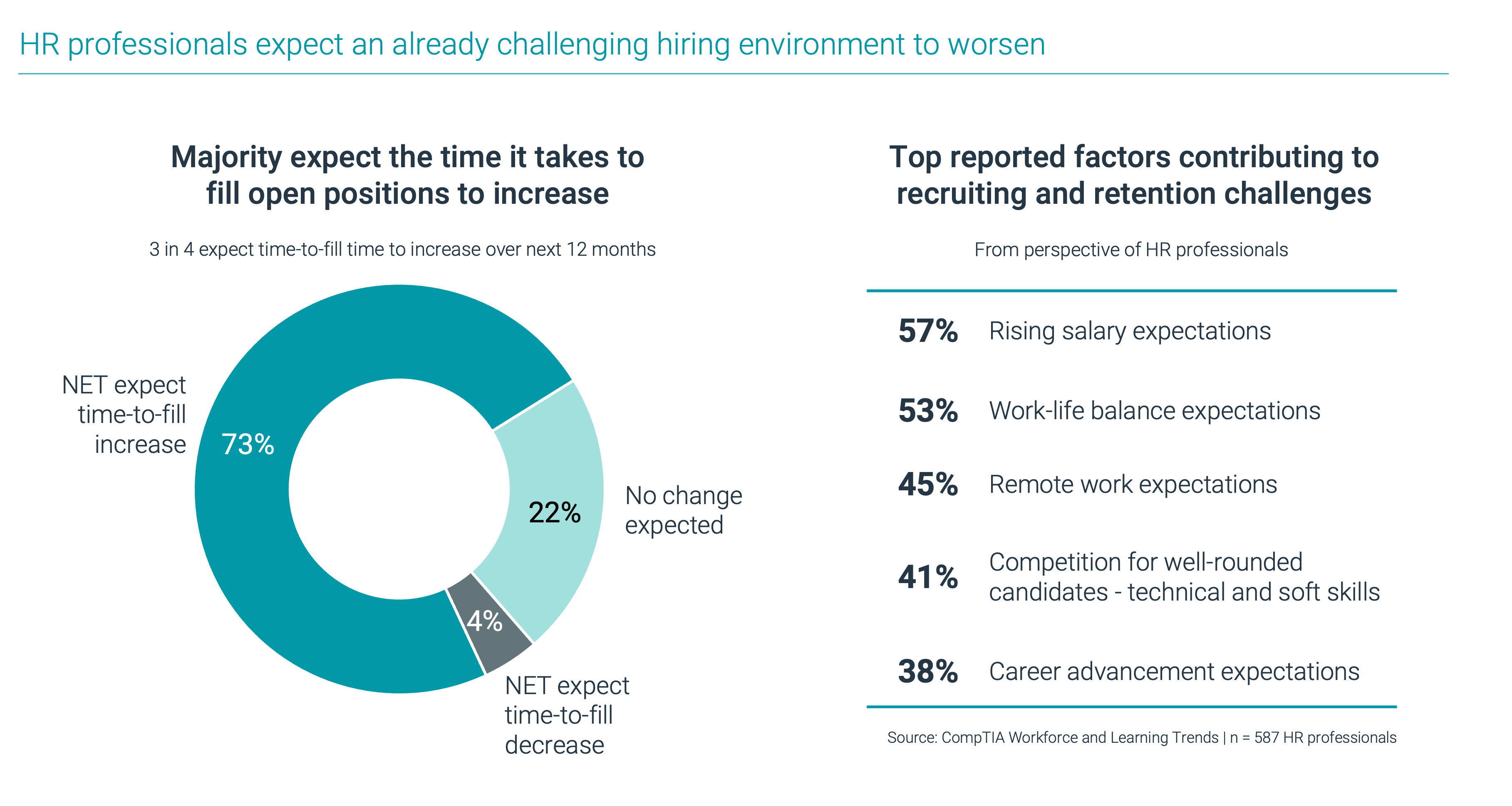Employers and Workers Negotiate a Great Resetting of Expectations on Both Sides
It will be some time before we account for all the upheaval caused by two years of a global pandemic and how it has shaped the future of work. But shifting behaviors and mindsets clearly signal a great resetting of expectations among workers and employers.
Work-life balance discussions were turned upside down while employees working from home navigated education for their children, persistent threats to their health, a shifting “return to normal” calculus, and imperfect policies and procedures. Despite these challenges, the changes forced by the COVID-19 pandemic also demonstrate that remote and flexible work are possible and, for a sizable share of workers, preferable.
Expectations have also been reset around career opportunities, engagement and meaning. For example, our survey of HR professionals found that factors contributing to the challenging hiring landscape include:
- Work-life balance expectations
- Remote work expectations
- Career advancement expectations
- Corporate culture and employee experience expectations
Scheduling . . . time on premises . . . engagement . . . opportunity. Many workers feel those factors are within their control now, in collaboration with employers, in a period when the rest of their lives have felt out of control.
Recalibrating around these new expectations begins with dialogue and data, says James Stanger, Chief Technology Evangelist at CompTIA. “Understanding what it means to have truly engaged employees has to be data driven,” he explains.
“A lot of companies are taking a look at what it means to create a healthy work environment that attracts talent and allows people to contribute at their best level. The main thing is the dialogue you engage in with your workers and with potential hires. If that’s your goal, then you have to be asking what your hiring process looks like.”
Meanwhile, expectations are resetting on the employer side in response to a range of competitive pressures. The demand for ever-greater levels of technical and digital skills continues to accelerate alongside new expectations around durable skills like team-centered communications, critical thinking and resilience (see section four). Remote work and hybrid teams require employers to emphasize skills and tools for a collaborative corporate culture across physical and virtual spaces.
The talent constraints era is also influenced by competitive pressures to hire and retain talent against a backdrop of global supply chain woes, the highest rate of inflation in nearly 40 years, and geopolitical conflict. Employers across many industry sectors undoubtedly face significant challenges in adjusting to the great resetting of expectations.

“Before the pandemic, there was a war to attract talent, and now there's a war to keep talent,” says Yvette Steele, Senior Director of Member Communities at CompTIA. “Employers are having to get more creative. Meaning from work is part of that and only comes when you have a close relationship and pay attention to the needs of the individual. When the individual has meaning in the work, they're more engaged, they're more creative and they're more likely to stay.”
Amy Kardel, Senior Vice President of Strategic Workforce Relationships at CompTIA, says, “We can anticipate a soft skills gap with all this remote work. If you entered the workforce in the last couple of years, you never had the socialization period others benefited from. We’re going to have to update our soft skills thinking. We've been fighting fires and now it's mop-up time.”
Please visit the CompTIA research hub to access the full Workforce and Learning Trends report.